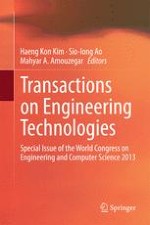2014 | OriginalPaper | Buchkapitel
33. A New Non-stationary Channel Model Based on Drifted Brownian Random Paths
verfasst von : Alireza Borhani, Matthias Pätzold
Erschienen in: Transactions on Engineering Technologies
Verlag: Springer Netherlands
Aktivieren Sie unsere intelligente Suche, um passende Fachinhalte oder Patente zu finden.
Wählen Sie Textabschnitte aus um mit Künstlicher Intelligenz passenden Patente zu finden. powered by
Markieren Sie Textabschnitte, um KI-gestützt weitere passende Inhalte zu finden. powered by
